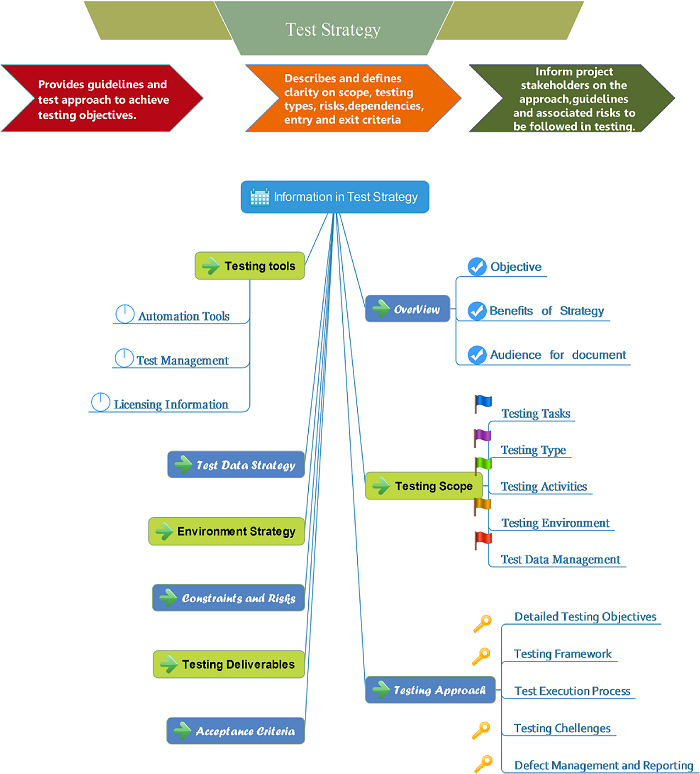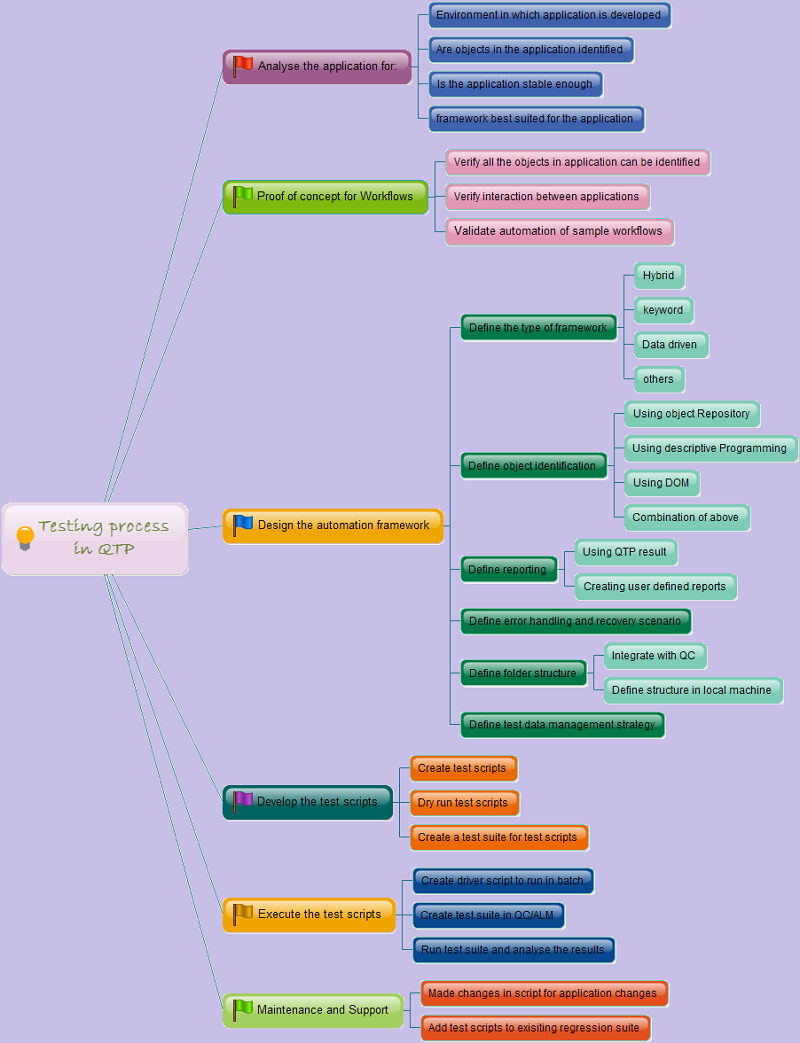In this mind map, we will discuss on automation framework in QTP explaining:
What is automation framework, what are different types of framework, what are key features of an automation framework and expectations from an automation framework:
Content in the mindmap:
Automation Framework in QTP
1. Set of Guidelines
1.1 Coding standards
1.2 Structure of test Data
1.3 Folder structure
1.3.1 Test Scripts
1.3.2 Test Libraries
1.3.3 Test Data
1.3.4 Test results
1.4 Object Repositories
2. Decisions
2.1 Decide automation framework to be used
2.2 Decide object Identification technique
2.3 Decide on set of automation guidelines
3. Framework Types
3.1 Linear
3.1.1 Script created by recording on AUT
3.1.2 Script creation is simple, fast and require minimal knowledge
3.1.3 No reusability of code
and high maintenance cost
3.2 Functional Decomposition
3.2.1 Divide test into logical groups or functions
3.2.2 Reusability of code is better
3.2.3 Scripts cannot be run with multiple set of data
3.3 Data Driven
3.3.1 Test data stored in external files
drives automation by executing scripts with multiple sets of data
3.3.2 Covers multiple scenario with same script and change in data does not
require change in scripts
3.3.3 Additional effort of creating test data and good knowledge of tool
for resource
3.4 Keyword Driven
3.4.1 Object, action and arguments are maintained in an excel sheet in form
of keywords
3.4.2 Highly reusable code can be used across applications. Once framework
is created, easy to create test scripts.
3.4.3 Initial investment in creating framework is high and understanding framework
for new user is comparably difficult
3.5 BPT Framework
3.5.1 BPT Components linked together to create test script using Quality
center.
3.5.2 Easier for business users to create scripts
3.5.3 License cost of BPT and dependency on QC
3.6 Hybrid Framework
3.6.1 Uses best features of various frameworks
3.6.2 Highly robust and maintainable if properly implemented
3.6.3 Require skilled automation experts.
4. Great Expectations
4.1 Framework should Support Versioning Controlling for files
4.2 should be executed in different environments
4.3 minimal change in script for object changes
4.4 Robust and easy to interpret reporting system
4.5 Should have strong error handling and recovery scenarios




